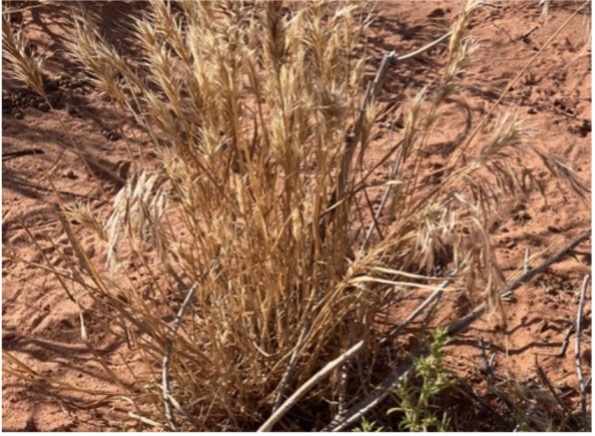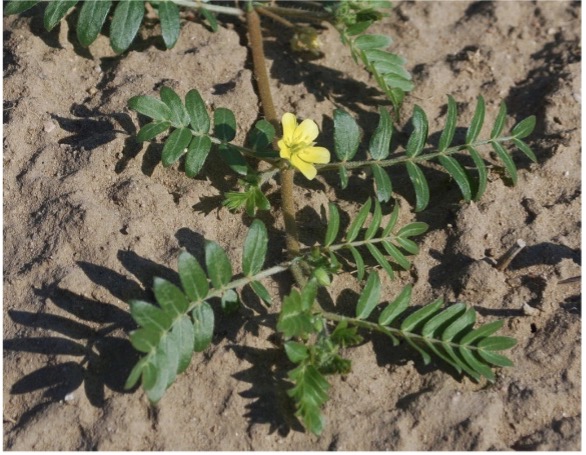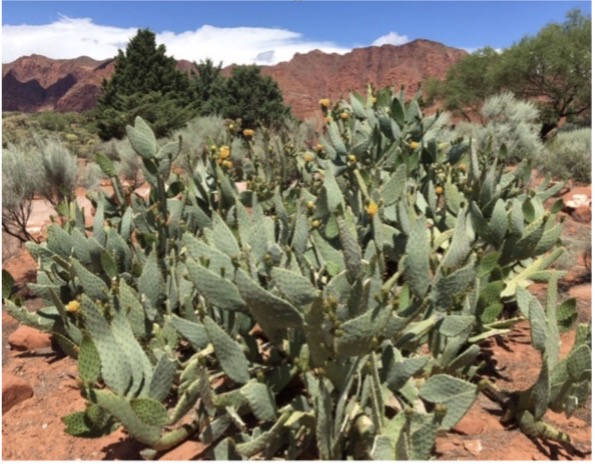Identifying and protecting the natives–and why it matters
As the Desert Preservation Initiative (DPI) moves forward with its work to protect the native desert ecosystem, in coordination with the Kayenta Planting and Landscaping Committee, we asked botanist and DPI secretary Terrence Walters what the issues are and why this matters.
How do you define a native species?
A native species is one that has originated and evolved in its surrounding ecosystem and has adapted to living in that particular habitat. Scientists generally consider that a species should be considered native to the U.S. if it was on the continent prior to the European occupation. Native species can, and often do, expand their ranges by dispersal of seeds or fruits by wind, animals, etc., into a new ecosystem, where they can eventually adapt and become part of that new ecosystem.
One native species that all of us appreciate and enjoy here is the Joshua Tree. This yucca relative is considered an endemic species, found only within the Mojave Desert between 1,300 and 5,000 ft. in elevation.
Why are some plant species considered invasive?
The term “invasive species” is used to define, often incorrectly, species that are considered weeds or pests; they are called introduced, alien, and opportunistic species. While the definition varies considerably, I define them as species that are non-native to a particular ecosystem, having been introduced intentionally or accidentally by humans or non-native organisms. They typically cause great environmental and/or economic harm to the ecosystem by competing with the native species for food and resources.
However, not all non-native species are considered invasive, including many food crops and horticultural species, such as those that we typically grow in our courtyards, around our homes, and in our gardens. Over time, invasive species can effectively replace the native species, often forcing the extinction of the natives and essentially creating a new ecosystem to ensure their survival and future success.
While the majority of non-native species do not become invasive, a few cause tremendous environmental and economic hardship to the ecosystem. Those that become invasive typically have the ability to outcompete native species for food and resources. When non-native species have no predators/disease in the new ecosystem they can out-compete the native species that are kept in check by local predators/disease.
What problems do invasive species create?
Right here where we live, we see the tremendous impact of the invasive species tamarisk (also known as Saltcedar) on the survival and reproduction of our native species, especially those that protect our rare and fragile riparian ecosystems. Tamarisk has a significant and long-term impact on 1) the sustainability of the biological diversity within southwestern Utah, 2) the specialized and sensitive microhabitats within our ravines, arroyos, and waterways, and, 3) what I consider the most severe, changing our native fragile desert habitats into tamarisk-dominated habitats. This last impact is the most difficult and most costly to fix, which is why you see programs devoted to removing tamarisk throughout the Southwest.
Invasive species demand massive costs and resources to manage or remove them from an ecosystem once they have gotten a foothold. Think about how much you spend on herbicides to kill invasives on your property, as well as the time you spend removing and spraying invasives to keep them out of your property and garden. And that is just your small piece of property.
What plants cause the primary problems in the Ivins community of Kayenta?
Let me tell you my story. When we first moved to Kayenta in 2019, nine tamarisk shrubs on my property had completely smothered the native shrubs in extensive areas and in some cases completely blocked my ravine forcing rainwater to cut through the previously stabilized banks. The leaf debris, which is high in salt concentrations, at some sites was close to six inches in depth. So, my very first task to protect and preserve the native desert habitat was to remove those massive shrubs.
Next, I removed three massive Cow’s Tongue Cactus along my driveway. Like tamarisk, this prickly pear cactus had also smothered my native cacti, Sand Sage, Ephedra, and Blackbrush. And I won’t even mention the alarming size of the desert rat nests I found at the base of these plants.
The Desert Preservation Initiative (DPI) is working to catalog invasive species here. So far, these include Puncturevine, Cheat Grass, and Russian Thistle (also called tumbleweed). Recently, some new invasives, such as Silverleaf Nightshade and some yet unconfirmed species have been spotted in Kayenta. We are waiting on confirmation of the species names for these as being on Utah’s noxious weed list.
When is a species considered opportunistic?
An opportunistic species is one that is able to take advantage of disturbances to the soil or to the existing vegetation in its native habitat so that its numbers dramatically increase. When disturbance to an ecosystem occurs, a native species that has the genetic potential for adapting to that disturbance will show rapid growth and increased reproductive potential allowing it to outcompete its neighbors for food and resources.
A local example in Kayenta is Desert Willow, a native to the Southwest. In its native habitat, it is most commonly found in wash scrublands and deciduous riparian woodlands. Many of us have this beautiful species under our care on our properties, including me, due to its perfect size, open form, and colorful flowers. In undisturbed habitats, Desert Willow is not a dominant species indicating that it probably does not have strong competition characteristics.
Seeds of our planted Desert Willows have now found a new habitat in Kayenta where they can grow and reproduce on their own – our roadsides. The drainage off of our streets after a rain provides enough water for seeds to germinate and plants to grow and reproduce. The species no longer has to depend on a ravine. Most of our native desert species have not evolved to be able to adapt to the edges of asphalt streets. Therefore, we often see our roadsides without any plants – just rock and sand and plants of the hardy herbaceous perennials Palmer Penstemon and Desert Marigold. When Desert Willow seeds are dispersed to the roadside edges they do not have to compete for available resources and are able to quickly germinate and send up a large number of stems to begin tapping available resources.
Finally, why does all of this matter?
Our work is committed to maintaining the health and natural beauty of our shared environment. People choose to live in Kayenta because of its unique landscape, recognizing that we are stewards for the other living creatures—plant and animal—that were here before we came. We aim to preserve this ecosystem, for the future.
The Desert Preservation Initiative is a 501(c)(3) non-profit in Southwest Utah. If you are interested in learning more about DPI, please visit our website desertpi.org to learn about joining, volunteering, and/or donating



